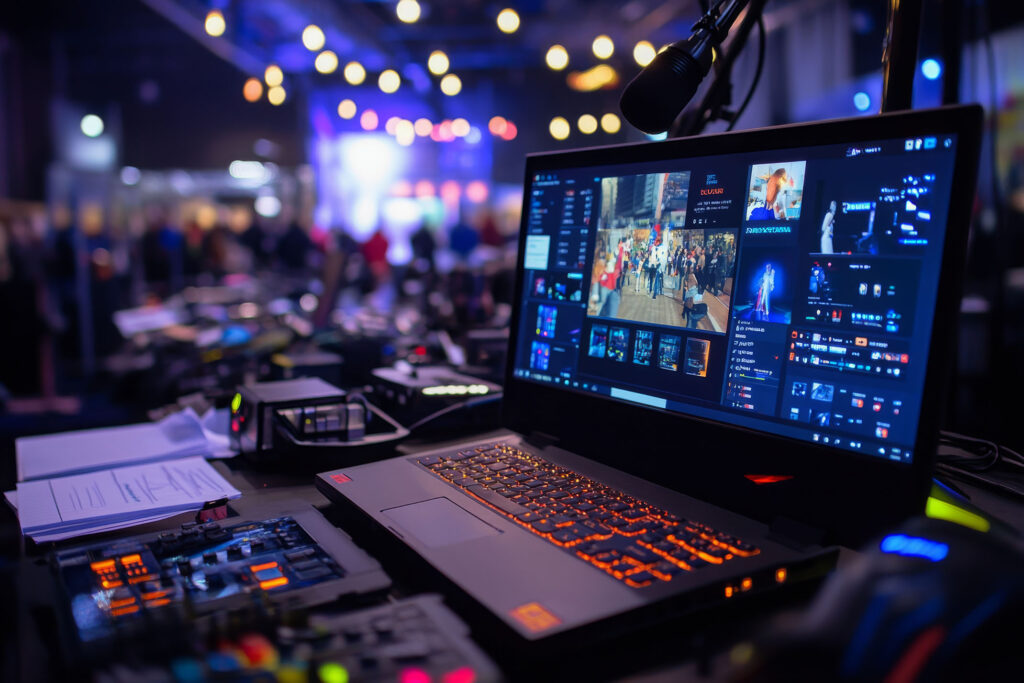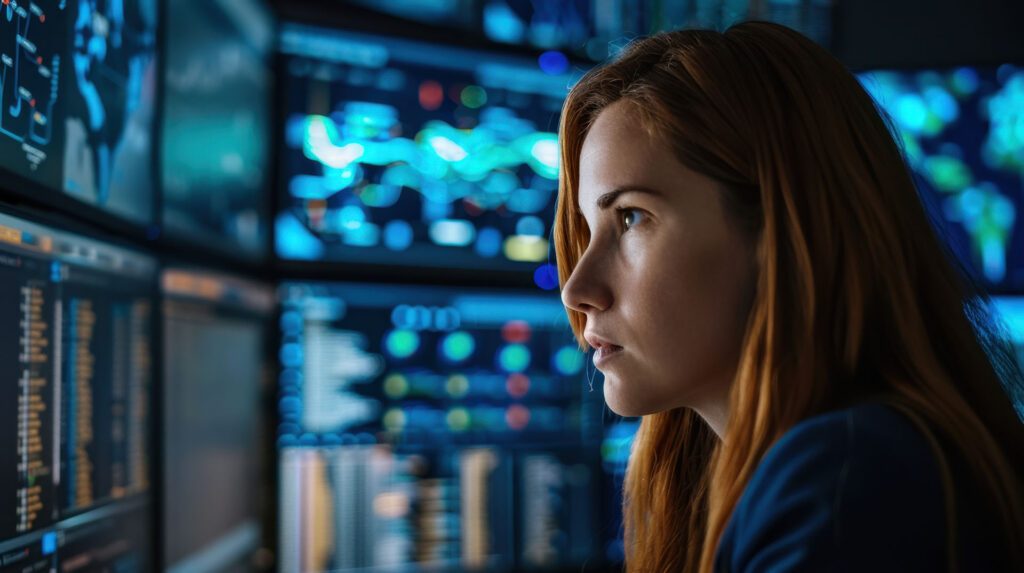Table of Contents
As humans, we rely heavily on visual cues to interpret and understand our surroundings.
In fact, studies have shown that our brain can process images up to 60,000 times faster than text alone, which is why incorporating visual technology into your events can have a tremendous impact on your audience.
In this blog, we’ll look into the psychology behind visual technology and how they can create lasting emotional impact at your next event.
The science behind visuals
Don’t worry, we’re not going to go too deep into the science here, but we think it’s useful to have a basic understanding of how our brains work when interpreting images.
In short, research has shown that visual content can convey more information and evoke more emotion than text-based content. In addition to being faster and easier to process, visual content is also more memorable; it creates a lasting impression on our minds and stays with us longer than just words. Images can be more easily associated with other memories and emotions, making them more likely to stick in our minds.
For generations, researchers have understood the powerful impact visual stimulus can have on the brain, but how does it work?
The process begins when light enters the eye and is transformed into an electrical signal that is sent to the brain, which the brain then processes and generates meaning, giving us the necessary information to interpret and react accordingly.
The brain processes images in the visual cortex, located in the occipital lobe. This area is highly sensitive to color, contrast, and motion, making it an ideal area to process visual information. Additionally, the visual cortex is connected to other areas of the brain, allowing for the connection of visual information to memory, language, and emotions.
Visuals that captivate event audiences
Visual content can have a profound impact on our emotions and attitudes. When we see an image that is positive or uplifting, our brain releases dopamine, a chemical that makes us feel good. Conversely, when we see something negative or unpleasant, our brain releases cortisol, the primary stress hormone that can make us feel anxious or agitated.
This means that visuals or lighting can have a significant impact on how we interpret and understand information, as well as our overall mood and mindset. Imagine if you changed the imagery used on stage or the lighting used around your event to affect the mood of your participants.
Imagine, for example, you come home after a busy day at work, take a break and scroll through your social feed, and come across an image of a beautiful beach with crystal clear water and white sand. As you look at the image, you may begin to feel a sense of relaxation and calm (potentially also jealousy!). The tranquil waters and blue sky are soothing, which could remind you of an enjoyable experience you’ve had in the past.
This change in your mood is due to the fact that the image has activated the reward center of your brain, releasing the feel-good chemicals that help reduce stress and anxiety. In addition, the image has also provided a visual distraction from the sources of your stress, allowing you to shift your focus and relax, if even only for a few moments.
This is why it’s important to use visual technology strategically and thoughtfully in various forms around your event, in order to create the desired emotional and psychological impact on the audience. Using LED signage, for example, you can change images depending on the time of day, and how busy it is, or conjure up certain feelings to match the current content being discussed.
Change the atmosphere of stressful event areas
Registration and badge collection areas can be a common cause of anxiety for many event participants.
Combined with sound (soothing music for example), you can help reduce event anxiety by simply utilizing calming colors through LED lighting, such as blues and greens, while adding relaxing images on your LED screen displays branded in the area.
Imagine, for example, adding ultra-clear LED displays with slow-moving images of nature that have been proven to reduce stress. Maybe they are branded, maybe instead they are just beautiful scenes set to help relax your event attendees and allow them to enjoy the event even more.
The emotional connection
Events are often designed to create a specific emotional experience for attendees, whether it’s a sense of excitement and energy or a feeling of relaxation and calm.
Visual technology can play a key role in creating an emotional experience, as it can set the tone, convey key messages, and create a sense of atmosphere and ambiance. Branding, signage, and multimedia displays can convey a sense of professionalism, expertise, and innovation as well as set the tone of voice for a brand in a more tangible way.
The emotional impact felt by attendees can lead to positive brand engagement by using imagery that compliments the message or product. Marketers and event designers can evoke feelings of joy, trust, or excitement, positively influencing the audience’s opinion depending on what is being shown or discussed.
If used correctly and strategically, smart visual technology will help ensure that your event is one that attendees will remember fondly and talk about long after they’ve headed home.
Captivating visuals beyond color, images, and light
The psychology of visuals goes far beyond simply using attractive images and colors.
Different shapes, lines, and textures can be used to create an atmosphere that supports your event’s goals by evoking specific emotions or reactions from participants. For example, lighting up a stage like an illuminated triangle could be used to create energy and excitement and focus attention on a certain area of the stage.
In addition, sound can also play a role in shaping the atmosphere of your event. The right choice of music will affect how people process visuals, as well as how they interact with each other. Starbucks, for example, used different types of music to affect the mood and buying patterns of its customers. When it was incredibly busy, they used up-tempo music to help people decide quickly and shuffle through queues efficiently; yet when it was quiet, they’d change to a more classical style of music so customers would stay longer, maybe have a second coffee or purchase a bakery item too!
Visuals combined with shapes and sound, if used strategically and thoughtfully, can have an amazing effect on how your event is experienced. Experimenting with the psychology of visuals will help you create the atmosphere and impact you desire for your event.
The power of captivating visual content
The use of captivating visual stimuli, such as images and video, can have a powerful effect on audiences. When implemented correctly, it has the ability to capture attention and communicate a message quickly and effectively. Strong visuals can create memorable experiences that stick with an individual long after an event has ended.
In today’s world, event marketers are increasingly looking for creative and impactful ways to express their messages. The psychology of visuals can be harnessed to create memorable and effective messages that resonate with audiences to convey emotions, provoke thought, and create lasting impressions.
By leveraging the power of captivating images, you can communicate an impactful message that will stick with your audience long after the event has ended.
Connect with a SmartSource® event technology solutions expert who will support your next project from end to end.
Innovation, Insights, and Industry Trends
View AllUnlock Exclusive Insights and Resources
Stay ahead with our latest in-depth articles, case studies, webinars and valuable resources, all delivered straight to your inbox.
Newsletter
"*" indicates required fields









